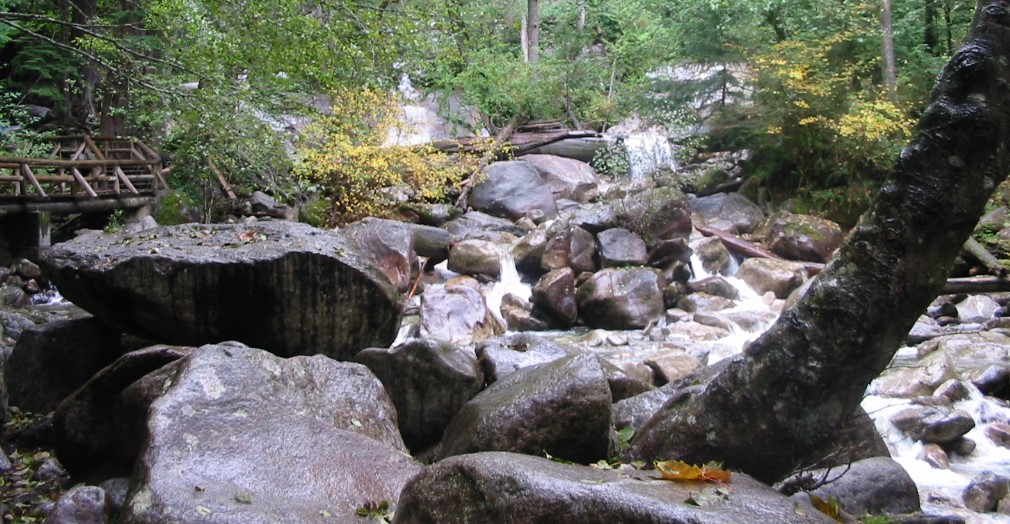10: Weathering Soil and Clay Minerals
- Page ID
- 25490
\( \newcommand{\vecs}[1]{\overset { \scriptstyle \rightharpoonup} {\mathbf{#1}} } \)
\( \newcommand{\vecd}[1]{\overset{-\!-\!\rightharpoonup}{\vphantom{a}\smash {#1}}} \)
\( \newcommand{\dsum}{\displaystyle\sum\limits} \)
\( \newcommand{\dint}{\displaystyle\int\limits} \)
\( \newcommand{\dlim}{\displaystyle\lim\limits} \)
\( \newcommand{\id}{\mathrm{id}}\) \( \newcommand{\Span}{\mathrm{span}}\)
( \newcommand{\kernel}{\mathrm{null}\,}\) \( \newcommand{\range}{\mathrm{range}\,}\)
\( \newcommand{\RealPart}{\mathrm{Re}}\) \( \newcommand{\ImaginaryPart}{\mathrm{Im}}\)
\( \newcommand{\Argument}{\mathrm{Arg}}\) \( \newcommand{\norm}[1]{\| #1 \|}\)
\( \newcommand{\inner}[2]{\langle #1, #2 \rangle}\)
\( \newcommand{\Span}{\mathrm{span}}\)
\( \newcommand{\id}{\mathrm{id}}\)
\( \newcommand{\Span}{\mathrm{span}}\)
\( \newcommand{\kernel}{\mathrm{null}\,}\)
\( \newcommand{\range}{\mathrm{range}\,}\)
\( \newcommand{\RealPart}{\mathrm{Re}}\)
\( \newcommand{\ImaginaryPart}{\mathrm{Im}}\)
\( \newcommand{\Argument}{\mathrm{Arg}}\)
\( \newcommand{\norm}[1]{\| #1 \|}\)
\( \newcommand{\inner}[2]{\langle #1, #2 \rangle}\)
\( \newcommand{\Span}{\mathrm{span}}\) \( \newcommand{\AA}{\unicode[.8,0]{x212B}}\)
\( \newcommand{\vectorA}[1]{\vec{#1}} % arrow\)
\( \newcommand{\vectorAt}[1]{\vec{\text{#1}}} % arrow\)
\( \newcommand{\vectorB}[1]{\overset { \scriptstyle \rightharpoonup} {\mathbf{#1}} } \)
\( \newcommand{\vectorC}[1]{\textbf{#1}} \)
\( \newcommand{\vectorD}[1]{\overrightarrow{#1}} \)
\( \newcommand{\vectorDt}[1]{\overrightarrow{\text{#1}}} \)
\( \newcommand{\vectE}[1]{\overset{-\!-\!\rightharpoonup}{\vphantom{a}\smash{\mathbf {#1}}}} \)
\( \newcommand{\vecs}[1]{\overset { \scriptstyle \rightharpoonup} {\mathbf{#1}} } \)
\( \newcommand{\vecd}[1]{\overset{-\!-\!\rightharpoonup}{\vphantom{a}\smash {#1}}} \)
\(\newcommand{\avec}{\mathbf a}\) \(\newcommand{\bvec}{\mathbf b}\) \(\newcommand{\cvec}{\mathbf c}\) \(\newcommand{\dvec}{\mathbf d}\) \(\newcommand{\dtil}{\widetilde{\mathbf d}}\) \(\newcommand{\evec}{\mathbf e}\) \(\newcommand{\fvec}{\mathbf f}\) \(\newcommand{\nvec}{\mathbf n}\) \(\newcommand{\pvec}{\mathbf p}\) \(\newcommand{\qvec}{\mathbf q}\) \(\newcommand{\svec}{\mathbf s}\) \(\newcommand{\tvec}{\mathbf t}\) \(\newcommand{\uvec}{\mathbf u}\) \(\newcommand{\vvec}{\mathbf v}\) \(\newcommand{\wvec}{\mathbf w}\) \(\newcommand{\xvec}{\mathbf x}\) \(\newcommand{\yvec}{\mathbf y}\) \(\newcommand{\zvec}{\mathbf z}\) \(\newcommand{\rvec}{\mathbf r}\) \(\newcommand{\mvec}{\mathbf m}\) \(\newcommand{\zerovec}{\mathbf 0}\) \(\newcommand{\onevec}{\mathbf 1}\) \(\newcommand{\real}{\mathbb R}\) \(\newcommand{\twovec}[2]{\left[\begin{array}{r}#1 \\ #2 \end{array}\right]}\) \(\newcommand{\ctwovec}[2]{\left[\begin{array}{c}#1 \\ #2 \end{array}\right]}\) \(\newcommand{\threevec}[3]{\left[\begin{array}{r}#1 \\ #2 \\ #3 \end{array}\right]}\) \(\newcommand{\cthreevec}[3]{\left[\begin{array}{c}#1 \\ #2 \\ #3 \end{array}\right]}\) \(\newcommand{\fourvec}[4]{\left[\begin{array}{r}#1 \\ #2 \\ #3 \\ #4 \end{array}\right]}\) \(\newcommand{\cfourvec}[4]{\left[\begin{array}{c}#1 \\ #2 \\ #3 \\ #4 \end{array}\right]}\) \(\newcommand{\fivevec}[5]{\left[\begin{array}{r}#1 \\ #2 \\ #3 \\ #4 \\ #5 \\ \end{array}\right]}\) \(\newcommand{\cfivevec}[5]{\left[\begin{array}{c}#1 \\ #2 \\ #3 \\ #4 \\ #5 \\ \end{array}\right]}\) \(\newcommand{\mattwo}[4]{\left[\begin{array}{rr}#1 \amp #2 \\ #3 \amp #4 \\ \end{array}\right]}\) \(\newcommand{\laspan}[1]{\text{Span}\{#1\}}\) \(\newcommand{\bcal}{\cal B}\) \(\newcommand{\ccal}{\cal C}\) \(\newcommand{\scal}{\cal S}\) \(\newcommand{\wcal}{\cal W}\) \(\newcommand{\ecal}{\cal E}\) \(\newcommand{\coords}[2]{\left\{#1\right\}_{#2}}\) \(\newcommand{\gray}[1]{\color{gray}{#1}}\) \(\newcommand{\lgray}[1]{\color{lightgray}{#1}}\) \(\newcommand{\rank}{\operatorname{rank}}\) \(\newcommand{\row}{\text{Row}}\) \(\newcommand{\col}{\text{Col}}\) \(\renewcommand{\row}{\text{Row}}\) \(\newcommand{\nul}{\text{Nul}}\) \(\newcommand{\var}{\text{Var}}\) \(\newcommand{\corr}{\text{corr}}\) \(\newcommand{\len}[1]{\left|#1\right|}\) \(\newcommand{\bbar}{\overline{\bvec}}\) \(\newcommand{\bhat}{\widehat{\bvec}}\) \(\newcommand{\bperp}{\bvec^\perp}\) \(\newcommand{\xhat}{\widehat{\xvec}}\) \(\newcommand{\vhat}{\widehat{\vvec}}\) \(\newcommand{\uhat}{\widehat{\uvec}}\) \(\newcommand{\what}{\widehat{\wvec}}\) \(\newcommand{\Sighat}{\widehat{\Sigma}}\) \(\newcommand{\lt}{<}\) \(\newcommand{\gt}{>}\) \(\newcommand{\amp}{&}\) \(\definecolor{fillinmathshade}{gray}{0.9}\)After carefully reading this chapter, completing the exercises within it, and answering the questions at the end, you should be able to:
- Explain why rocks formed at depth in the crust are susceptible to weathering at the surface,
- Describe the main processes of mechanical weathering, and the types of materials that are produced when mechanical weathering predominates,
- Describe the main processes of chemical weathering, and the products of chemical weathering of minerals such as feldspar, ferromagnesian silicates, and calcite,
- Discuss the relationships between weathering and soil formation, and the origins of soil horizons and some of the different types of soil,
- Describe and explain the distribution of some of the important soil types in Canada,
- Describe the components of clay minerals and the unique characteristics of specific clay minerals, and
- Explain how clay minerals can have implications for slope failure, earthquakes, groundwater flow, mineral deposits, climate change and Earth systems in general.
- 10.1: Mechanical Weathering
- This page explains the formation of different rock types: intrusive igneous rocks form underground, sedimentary rocks develop from compressed sediments, and metamorphic rocks appear at great depths. Weathering occurs post-uplift, driven by mechanical processes such as freeze-thaw cycles, salt crystal growth, and biological activity. Frost wedging and heaving fracture rocks, while salt weathering is significant in coastal areas.
- 10.2: Chemical Weathering
- This page discusses chemical weathering, highlighting how minerals are altered through processes like hydrolysis and oxidation influenced by water and carbon dioxide. Warm, wet climates accelerate weathering, affecting minerals like feldspar and iron-rich components while quartz remains stable. Weathering produces sediments of varying composition, with quartz commonly forming sedimentary deposits on land, while clays and dissolved ions contribute to oceanic environments.
- 10.3: Soil Formation
- This page discusses the importance of weathering in soil formation, which is vital for life. It outlines soil composition influenced by various factors (CLORPT) and describes the evolution of soil profiles into distinct horizons. Additionally, the page highlights soil erosion caused by human activities like agriculture and forestry, emphasizing the protective role of vegetation.
- 10.4: The Soils of Canada
- This page discusses Canada's transition from the U.S. soil classification system to its unique system in 1955, introducing 10 soil orders. Key soil types include Podsols, Luvisols, Brunisols, Chernozem, and Organic soils. It explains how climate influences soil formation processes, resulting in distinct types like podsolization in cool regions and limited development in permafrost zones.
- 10.5: Clay Minerals
- This page discusses clay in Earth science, defining it as fine-grained materials and clay minerals formed from silicate mineral weathering and hydrothermal processes. Key clay minerals, such as kaolin and illite, differ in structure and properties. Their formation is influenced by environmental factors, and their unique characteristics affect groundwater flow and waste management. Clays can scavenge pollutants and act as barriers, but also present geological risks.
- 10.6: Chapter 10 Summary and Questions for Review
- This page discusses Chapter 10, focusing on weathering and soil formation. It describes mechanical weathering processes such as exfoliation and freeze-thaw, and chemical weathering processes like hydrolysis and oxidation. Key factors influencing soil formation include climate, parent material, and time, resulting in distinct soil horizons, especially in Canada's varied regions. The chapter also highlights the importance of clay minerals in agriculture and pollution control.
We cannot live on this planet unless we can grow food, and, for the most part, we need soil to grow food. An understanding of soil is critically important to us. In this chapter we will discuss some of the variables in soil formation, such as climate, parent material, slope and time, and also the importance of soil conservation, but we’ll start by looking at weathering of rocks, because weathering of rock is critical to the process of soil formation.
Clay minerals are major components of soil, but they also play a role in many geological processes that are relevant to environmental geology. This chapter also includes an overview of the mineralogy, origins, properties, and importance of clay minerals in the context of soil, and also its importance to climate change, earthquakes, groundwater, slope failure, waste disposal, and environmental geochemistry.
Weathering is what takes place when a body of rock is exposed to the “weather”—in other words, to the forces and conditions that exist at the earth’s surface. With the exception of volcanic rocks and some sedimentary rocks, most rocks form at significant depth within the crust. There they are exposed to relatively constant temperature, high pressure, no contact with the atmosphere, and little moving water. Once a rock is exposed at surface—which is what happens following uplift and erosion of the overlying rock—conditions change dramatically. Temperatures vary widely, the pressure is reduced, oxygen and other gases are plentiful, and, in most climates, water is abundant (Figure \(\PageIndex{1}\)).

Figure (\PageIndex{1}\) Granitic Rock at Surface, Shannon Creek, British Columbia. This rock formed at depth in the crust and is now under much reducedpressure and exposed to water, air, widely varying temperatures, and many forms of life.
Weathering includes two main processes that are quite different. One is the mechanical breakdown of rock into smaller fragments and the other is the chemical change of the minerals within the rock to forms that are stable in the surface environment. Mechanical weathering provides fresh surfaces for attack by chemical processes (as is evident in Figure 10.0.1) and chemical weathering weakens the rock so that it is more susceptible to mechanical weathering. Together, these processes create two very important products, one being the ingredients for the soil that is necessary for our existence on Earth, and the other the sedimentary clasts and ions in solution that can eventually become sedimentary rock.
Media Attribution
- Figure 10.0.1 Photo by Steven Earle, CC BY 4.0


